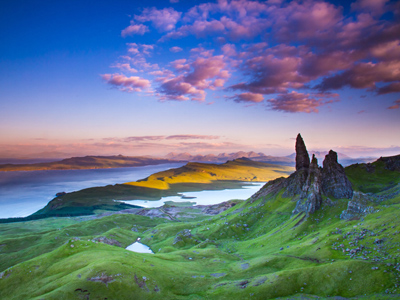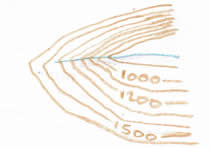
OS Maps: Landscape Features
This GCSE Geography quiz takes a look at land features on Ordnance Survey maps. A map is a representation of part of the surface of the Earth and cartographers have developed many different ways of representing landscape features. Some of these are human made like villages, quarries and power lines, whilst others are natural - valleys, spurs, rivers etc. A lot of these features can be recognised from the symbols used to represent them but to spot others, you need to look closely at the contour lines.
To recognise a valley, the contour lines form a pattern that is either a V shape or a U shape. Next, you need to look at the heights represented by the contour lines. If they get lower as you move away from the closed part of the V or U, then you have a valley. If there is a blue line running down the valley, it contains a stream, otherwise, you have a dry valley.
Spurs have the same pattern of contour lines as valleys, so this can make things a little tricky. To recognise a spur, look at the closed part of the V or U shape. If the altitude represented by the contour lines is lower towards the closed point of the V or U, then you have a spur. Any streams marked on the spur will leave down the sides and not along its length as a spur is high ground and water will always flow to a low point.
As well as recognising landscape features from an OS map, you could also be asked to identify their characteristics. You need to look closely for any clues, for example, a valley may have a cliff marked along one or both sides or there may be a coniferous woodland there. The closeness of the contour lines can help you as well - the closer they are together, the steeper the slope. Also, if a valley for example has a very wide and flat shape, the V or the U shape of the contour lines will be more difficult to see. With practice, you can soon become used to these ideas.
You can apply the same ideas to hills too. Look carefully at the contour lines that you are presented with in order to determine the shape and steepness of a hill. If the contours are a series of concentric circles or oval shapes, the hill will have uniform slopes all around. Most hills though will have parts that are steeper than others, noted where the contour lines are closer together than in other parts of the hill. If there are two hills together, the contours will show a col (saddle).
Ready for more?
not all...
quizzers. Try to win a coveted spot on our Hall of Fame Page.

















